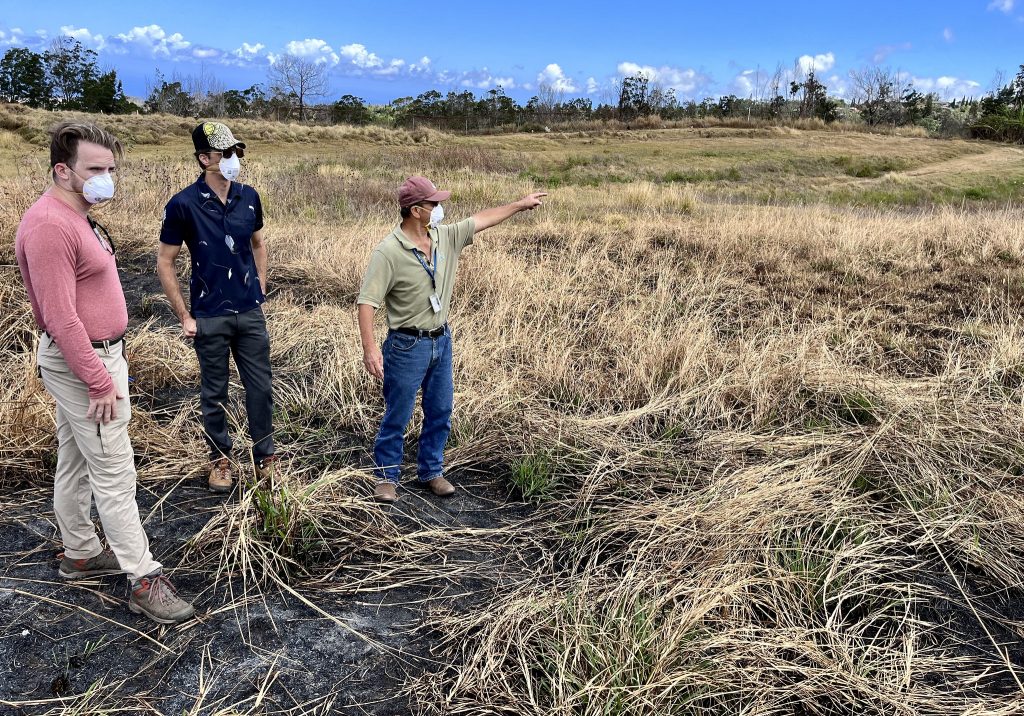Federal emergency watershed program helping with environmental damage from Maui wildfires

Three Soil & Water Conservation Districts and the County of Maui are working with the federal Emergency Watershed Protection Program to quickly address widescale environmental damage caused by the August wildfires.
The federal program is designed to help safeguard against imminent hazards to life and property in response to emergencies created by natural disasters. It provides technical assistance and matching funds, but also requires an entity committed to managing and implementing approved disaster response projects to serve as a project sponsor.
The Olinda-Kula, West Maui and Central Maui districts are sponsoring three of the four major wildfires on Maui — Kula, Olinda and Pulehu/Kīhei — with a collective burn area of about 7,500 acres.
The County of Maui is sponsoring the Lahaina burn zone that includes approximately 1,446 acres of non-developed land.

The response team is led by a Honolulu-based area office of the USDA’s Natural Resources Conservation Service, which administers the federal program.
The team is in the process of conducting a full damage assessment of Maui’s burn zones, from which technical recommendations and specific projects will be developed. Preliminarily, the team has identified immediate needs to prevent potential soil erosion, infrastructure damage and flooding that can threaten structures and lands downstream of burned areas.
The work needs to be done quickly with the possibility of tropical storms or other major rain events causing another disaster, according to a news release from the Central Maui Soil & Water Conservation District.
“Given the magnitude of the destruction, we’re certainly concerned about the risk of future damage to Maui’s communities and landscapes from severe runoff, blockages in natural waterways and sedimentation,” said Gerald Gregory, a federal district conservationist based at the program’s Kahului Service Center.
Some of the possible projects include appropriate revegetation efforts to stabilize soil and prevent erosion; controls to protect the young plants from feral deer; restoration of water systems; and removal of large quantities of debris from difficult terrain.
These disaster response projects would be managed by the Maui sponsors.
“Within days of the disaster, NRCS had assembled a response team that quickly plugged into their networks, activated resources and put critically needed boots on the ground to help address the catastrophic situation on Maui,” said Mae Nakahata, chair of the Central Maui Soil & Water Conservation District.
For more information, visit www.mauicountysoilandwater.org.
For more information about the Natural Resources Conservation Service, visit www.pia.nrcs.usda.gov.









